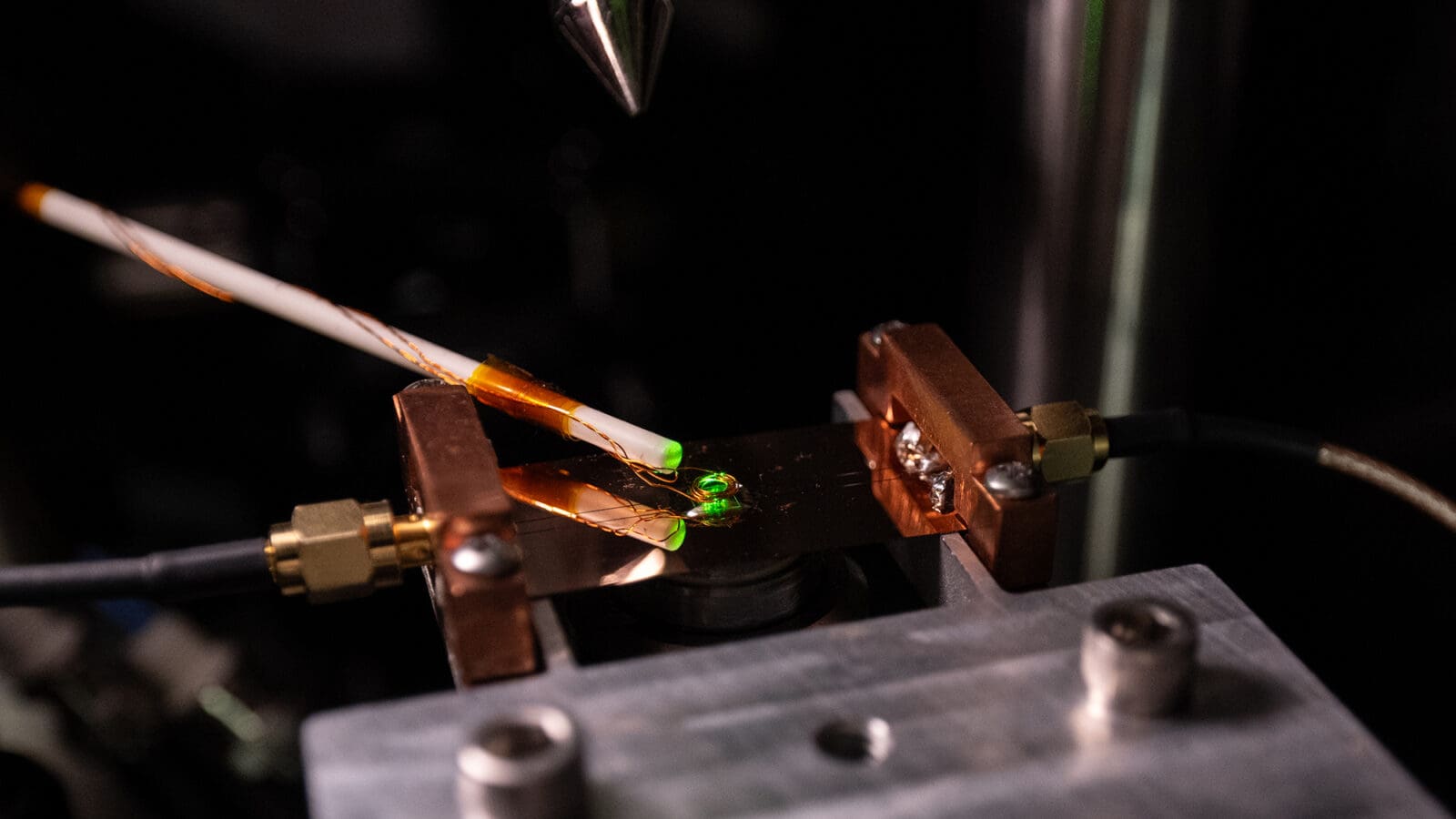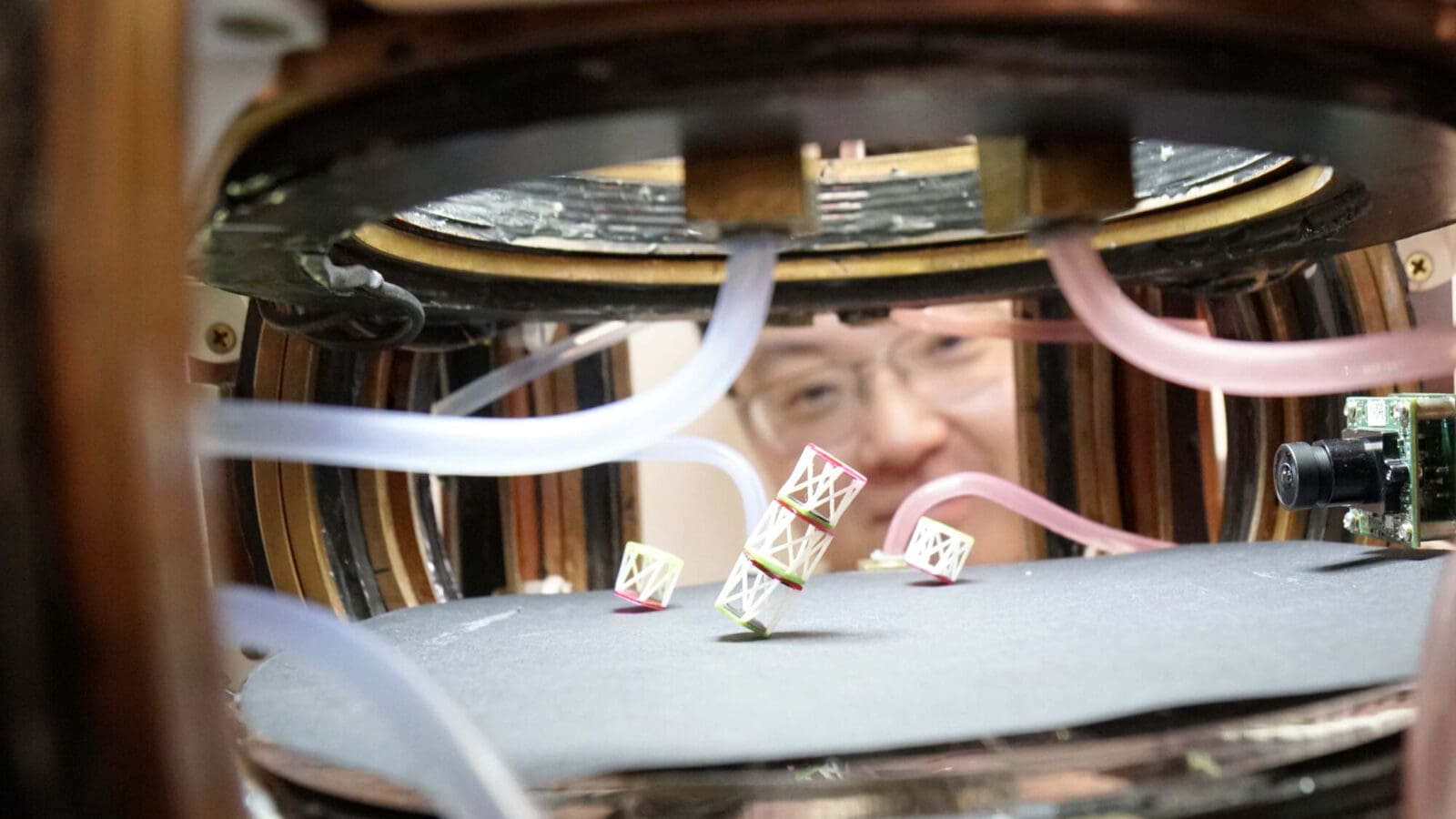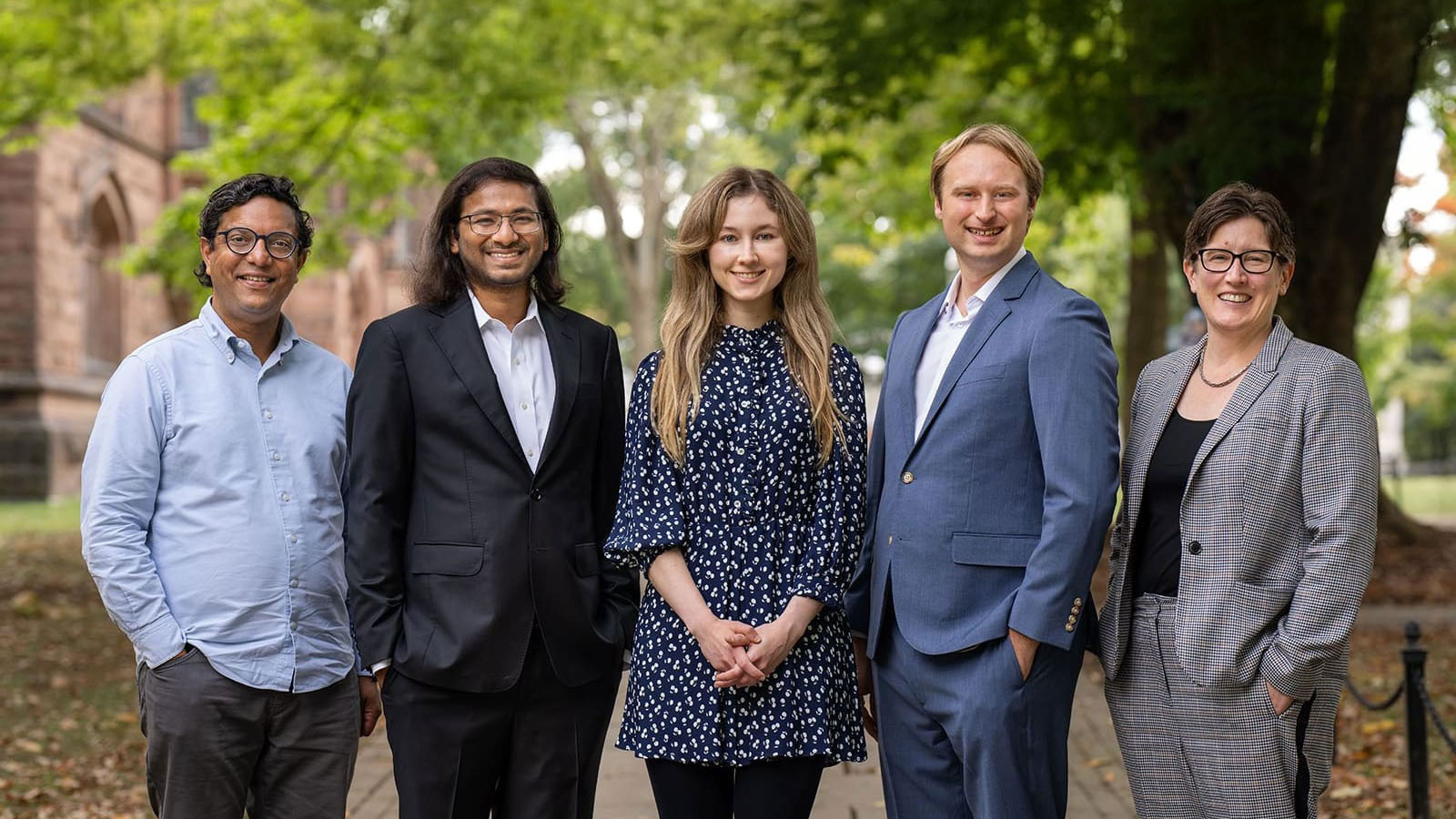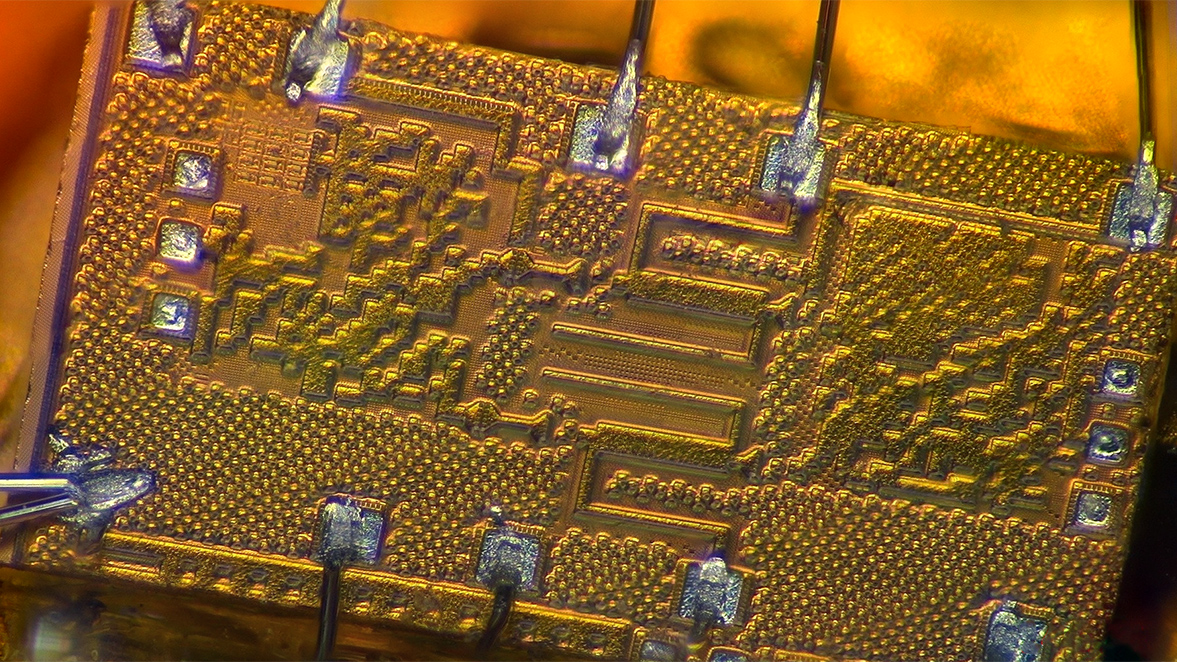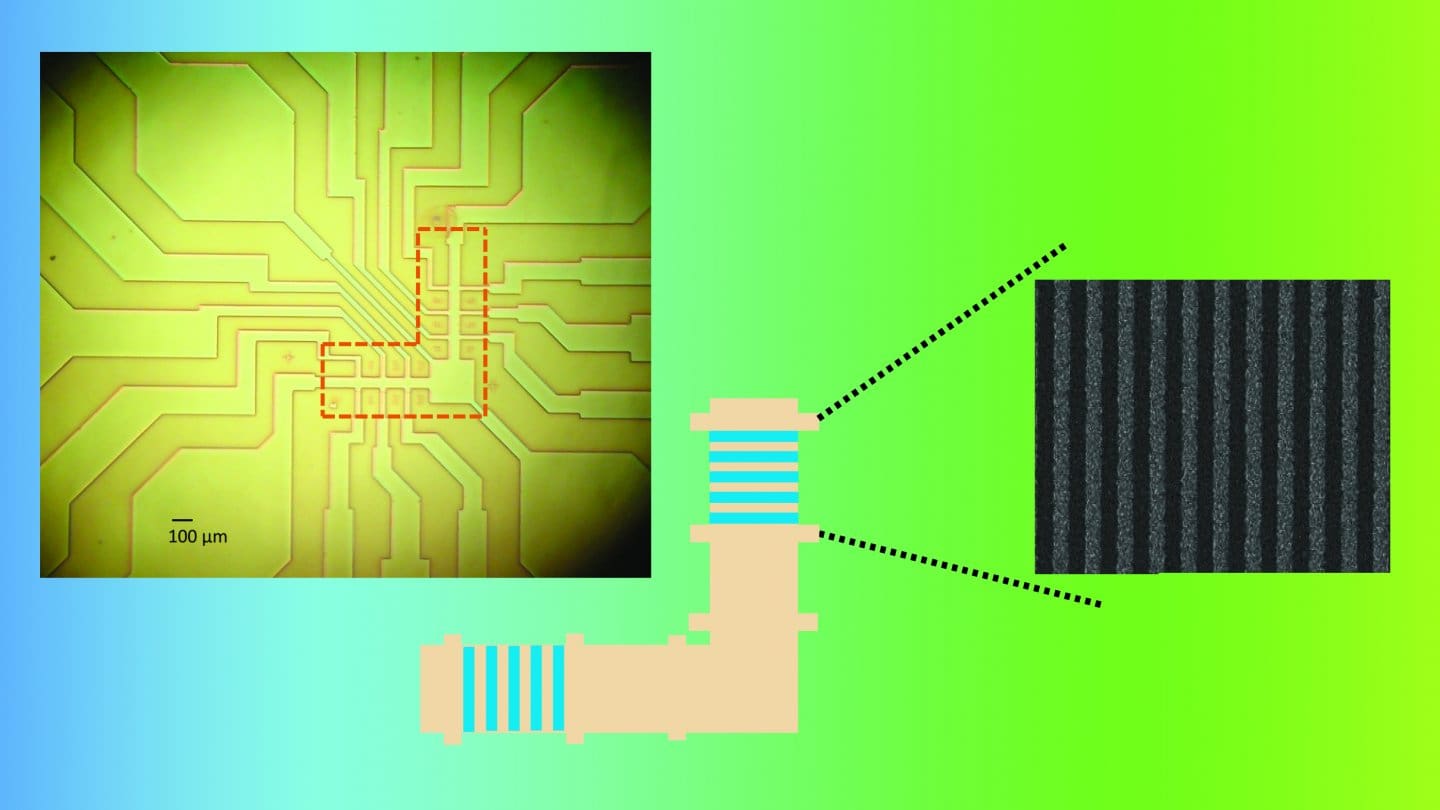
Strange quasi-particles reveal new magnetic behavior, verify nearly century-old prediction
By
on
In the study, published August 17 in Nature Physics, researchers led by Mansour Shayegan, professor of electrical engineering, used an ultra-pure semiconductor to explore what happens to electrons as they become less densely packed in a two-dimensional space, a plane between two solids that is only one particle deep.
As the team slowly reduced the material’s electron density, they first saw an expected result: its magnetic properties became weaker until they disappeared altogether. While very few systems have explored electron density at this level, the mathematics made sense of the results to that point. The researchers had surpassed a critical threshold. But because they were working with a rare material system that allowed them to study these effects at even lower densities, they decided to keep going and push the experiment to its physical brink. What happened next came as a surprise.
“All of a sudden, they became polarized,” Shayegan said. “Their spins lined up.”
Spin is a quantum mechanical characteristic of electrons and elementary particles that bears a relation to magnetic fields. The particles can be in one of two spin states, which scientists call up or down. (In quantum mechanics, they can also be in a third state called superposition, but that is unrelated to this experiment.) When the spin states of multiple particles match, they produce a magnetic field.
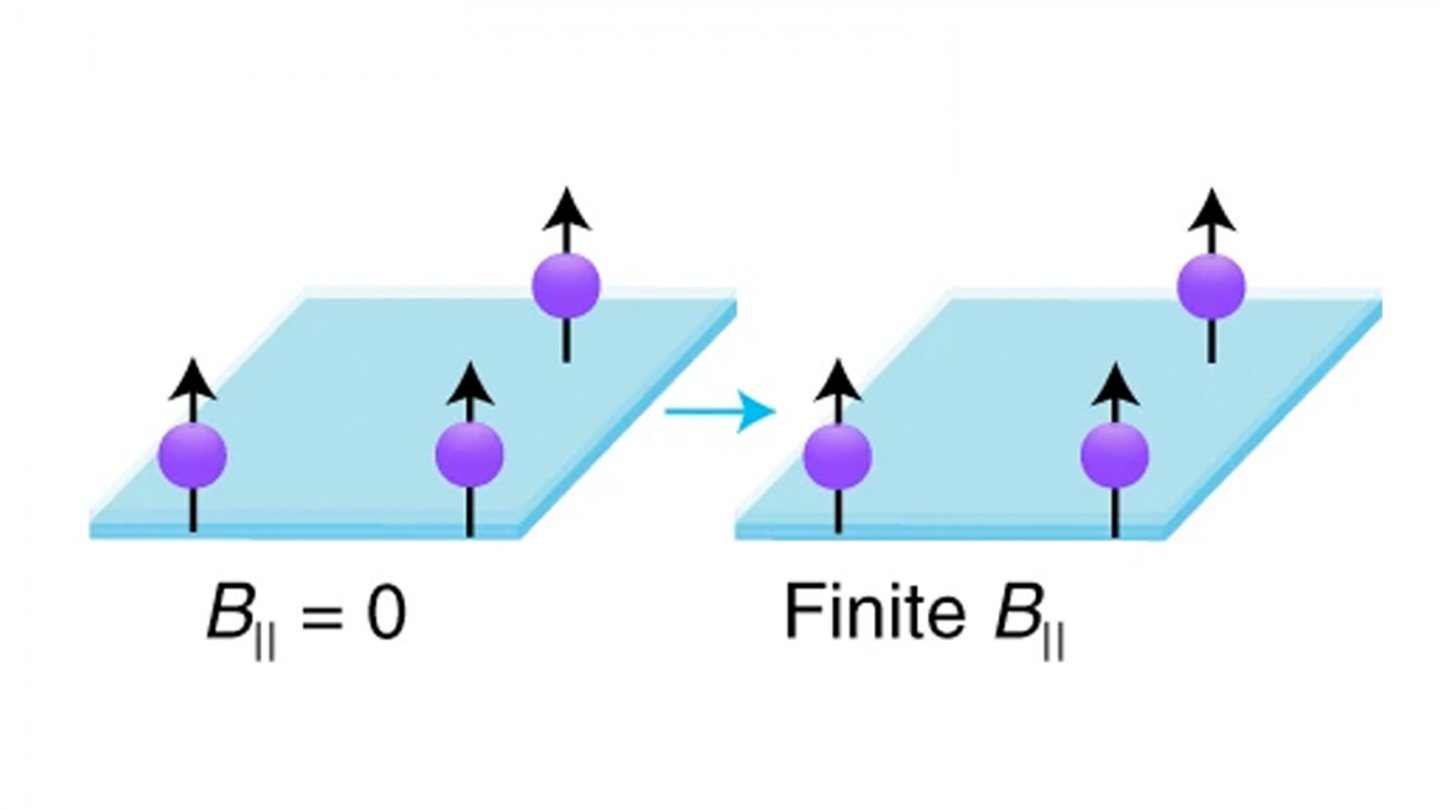
A figure from the paper shows what happens far below the previously observed threshold. At extremely low densities, the spins of the quasi-particles all aligned, or polarized, to form a fully magnetic state.
Image courtesy of the researchers
Because freely moving electrons are extremely difficult to study, the team looked at a proxy — a quasi-particle called a composite fermion (made of an electron and two quanta of magnetic flux). Graduate student Md Shafayat Hossain, the paper’s first author, likened this quasi-particle to a horse galloping over a plain, an analogy first put forward by Richard Mattuck.
“What you see from a distance is not only the horse but the horse and all the dust that surrounds it,” he said. Watching the horse and dust together — the composite fermion – is simpler and allowed the researchers to see this magnetic switch in action.
The researchers’ material system, made of gallium arsenide and aluminum gallium arsenide, came from Loren Pfeiffer, a senior research scholar and co-author on the paper, who specializes in growing ultra-pure materials crystal by crystal through a method known as molecular-beam epitaxy .
The experimental observation alone proved puzzling to the Princeton team. To understand the theoretical physics at play, they turned to a team at Pennsylvania State University led by Jainendra Jain, who helped originally identify the composite fermion in the 1990s. The calculations that Jain’s team made, based on Bloch’s 90-year-old theory, closely matched the experimental results.
The Princeton team had seen Bloch’s theory in action, not in electrons directly but through the study of their magnetic quasi-particle cousins, the composite fermion.
“Putting these two things together, I feel, was amazing,” Shayegan said. “The physics from the old days and these new particles. They show what was predicted so many years ago that nobody had seen.”
The work was supported by the National Science Foundation, the U.S. Department of Energy, and the Gordon and Betty Moore Foundation. An article describing this work in detail appeared recently on Phys.org.
